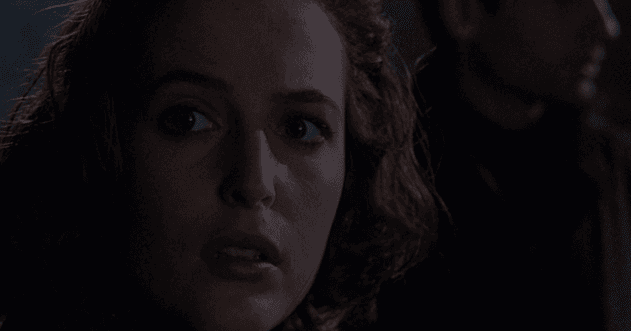The X-Files premiered 30 years ago, in 1993, and ran for nine seasons, captivating audiences with its blend of sci-fi, horror, and conspiracy theories. The show followed FBI agents Fox Mulder, a believer in the paranormal, and Dana Scully, a skeptical medical doctor, as they investigated unexplained phenomena. With two movies and two revival seasons, The X-Files has left an indelible mark on pop culture. Even now, a reboot is in the works, promising to bring new stories to eager fans.
From its eerie theme song to Mulder’s iconic “I Want to Believe” poster, The X-Files is full of memorable moments. But there’s more to this show than meets the eye. Here are 10 fascinating facts you might not know about The X-Files.
10. Star-Studded Cameo Appearances
Each week, Mulder and Scully encountered new, bizarre cases which meant the show needed a constant stream of fresh faces. The X-Files snagged several actors who were already well-known. Bruce Campbell of Evil Dead fame played a demon wanting to be a father in “Terms of Endearment,” while Jodie Foster voiced a murderous tattoo in “Never Again.” Even Hollywood legend Burt Reynolds appeared as God in “Improbable.”
Many actors who later became huge stars also made early appearances on The X-Files. For example, Ryan Reynolds was briefly in “Syzygy,” a young Shia LaBeouf appeared in “The Goldberg Variation,” and Luke Wilson played two versions of the same character in “Bad Blood.”
9. The Accidental Theme Song
Chris Carter, the creator of The X-Files, wanted a theme song that sounded like “something that Boy Scouts could hum at the campfire, as a scary song,” similar to The Twilight Zone. He sent Mark Snow, the composer, “How Soon Is Now?” by The Smiths as inspiration, admiring the guitar sound. Ironically, Love Spit Love’s cover of that song later became the theme for Charmed.
Snow struggled until he accidentally rested his elbow on his keyboard with the echo effect on. That sound sparked an idea, and he began to create a melody, experimenting with flute, piano, and violin. When none of those worked, he found a sample called “Whistling Joe” on his Proteus 2 synthesizer. His wife, Glynn, enhanced it, resulting in the iconic whistle that we all know.
The theme song, sometimes called “Materia Primoris,” charted in several countries, and remixes by DJ Dado and Triple X also gained popularity. The show is referenced in songs like Catatonia’s “Mulder and Scully,” Bloodhound Gang’s “The Bad Touch,” and Barenaked Ladies’ “One Week.”
8. Behind-the-Scenes Tension
In a twist, Gillian Anderson is the believer in real life, while David Duchovny is the skeptic. Anderson has said, “Psychokinesis appeals to me. ESP, telling the future, I love that stuff.” Despite their on-screen chemistry, Duchovny and Anderson initially did not get along. Duchovny mentioned in a 2016 interview that “the crucible of doing that show made monsters out of both of us.”
Their relationship improved when they reunited for The X-Files: I Want to Believe in 2008. Anderson noted, “Our relationship has definitely become a proper friendship over the last few years. I think we’re more on each other’s side. We’re more aware of the other’s needs, wants, concerns, and mindful to take those into consideration.”
Both lead actors also contributed behind the camera, writing and directing episodes. Anderson was involved with “all things,” while Duchovny wrote and directed several episodes.
7. The Episode Fox Banned
The X-Files never shied away from being scary. However, the season four episode “Home” crossed a line. The episode features infanticide, graphic violence, and an incestuous, inbred family. Writer James Wong remembered a producer calling and saying, “You guys are sick!”
“Home” first aired in October 1996 without any warnings, before TV Parental Guidelines were introduced. Fox didn’t rerun the episode for three years. When it finally aired again in October 1999, it carried the show’s only TV-MA rating for graphic content. Fox even used the episode’s disturbing nature in its marketing, with TV Guide advertising, “Only on Halloween… would we dare air an episode so controversial.”
6. From X-Files to Final Destination
Jeffrey Reddick, a huge X-Files fan, wrote a spec script called “Flight 180” after reading about a woman who changed flights based on her daughter’s bad feeling. When the original plane crashed, Reddick wondered, “What if she was supposed to die on that flight?” His script featured Scully’s brother having a premonition about a plane crash and cheating death. Although Reddick didn’t submit the script, it evolved into Final Destination.
X-Files writers James Wong and Glen Morgan (brother of Darin Morgan, the writer and actor who played the Flukeman) helped with the screenplay. Wong also directed the film, giving Final Destination distinct X-Files fingerprints. Reddick’s original script can be found online via Bloody Disgusting.
5. Spin-Offs and Crossovers
The X-Files’ success led to several spin-offs and crossovers. The Lone Gunmen, a spin-off about the trio who occasionally assisted Mulder and Scully, lasted only one season. An animated spin-off, The X-Files: Albuquerque, focusing on agents handling cases deemed too silly for Mulder and Scully, was canceled during development.
The most famous crossover is likely “The Springfield Files,” a Simpsons episode where animated versions of Mulder and Scully investigate an alien. Other crossovers include “X-Cops,” where the duo interacts with the reality show Cops, and “Unusual Suspects,” featuring Detective John Munch from Homicide: Life on the Street and Law & Order: Special Victims Unit. “Millennium” provided closure for Chris Carter’s canceled show Millennium, with Mulder and Scully enlisting Frank Black’s help.
There are also comic book stories, including crossovers with 30 Days of Night, where Mulder and Scully encounter vampires in Alaska, and Teenage Mutant Ninja Turtles, with the Lone Gunmen investigating the heroes in a half-shell.
4. The X-Files’ Role in Breaking Bad
Vince Gilligan, a writer for The X-Files, credits one episode in particular for influencing Breaking Bad. In the season six episode “Drive,” Patrick Crump, a disagreeable character, must be driven west by Mulder to prevent his head from exploding. Gilligan wanted the audience to sympathize with this horrible man by the end and believed that “Bryan [Cranston] alone was the only actor who could do that, who could pull off that trick. And it is a trick. I have no idea how he does it.”
Walter White required the same acting skill, and Gilligan wanted to cast Cranston after being impressed by his X-Files performance. AMC executives were hesitant, only knowing Cranston as the goofy dad from Malcolm in the Middle. Gilligan showed them “Drive,” which convinced them of Cranston’s talent.
Other Breaking Bad actors also appeared on The X-Files, including Aaron Paul (Jesse Pinkman) in season nine’s “Lord of the Flies” and Dean Norris (Hank Schrader) in season two’s “F. Emasculata.”
3. Unmade Episodes
Several X-Files stories never made it to television. One notable concept was a remake of George A. Romero’s Night of the Living Dead, planned for season seven. Romero was set to direct, and Stephen King, who wrote the season five episode “Chinga,” was going to write it. However, the episode never materialized for unknown reasons.
Another abandoned episode was about Abraham Lincoln’s ghost haunting the White House. It was intended for season four, but after extensive rewrites on “Musings of a Cigarette-Smoking Man,” Glen Morgan and James Wong scrapped it. Morgan told Cinefantastique, “I had done a lot of research, and I had always wanted to write a feature about Lincoln’s ghost. But I felt they didn’t want my heart and soul anymore, so I wouldn’t give this one to them.”
2. Star Trek’s Parody
The 1996 Star Trek: Deep Space Nine episode “Trials and Tribble-ations” features characters who parody Mulder and Scully. Dulmur and Lucsly, near-anagrams of Mulder and Scully, work for the Department of Temporal Investigations (DTI), an acronym similar to FBI. The truth-seeking duo reappear in Christopher L. Bennett’s book Watching the Clock.
James W. Jansen, who plays Lucsly, also starred in The X-Files as Dr. Heitz Werber, who hypnotizes Mulder to help him recall his sister’s abduction. Mulder works with Werber in several episodes to perform hypnotic regression therapy on other abductees, including Scully herself.
Though not a parody, Californication, starring Duchovny, includes a nod to The X-Files. When Hank wears a suit in “The Trial,” he complains that he “looks like a f**king FBI agent.”
1. The Scully Effect
Gillian Anderson’s portrayal of an intelligent female scientist and FBI agent inspired many women to pursue careers in STEM fields. This phenomenon became known as the Scully Effect. In 2013, Anderson said, “We got a lot of letters all the time, and I was told quite frequently by girls who were going into the medical world or the science world or the FBI world or other worlds that I reigned, that they were pursuing those pursuits because of the character of Scully.”
The Scully Effect is more than just stories. A 2018 report by the Geena Davis Institute on Gender in Media found that “among women who are familiar with Scully’s character, half (50%) say Scully increased their interest in STEM.” Furthermore, “nearly two-thirds (63%) of women that work in STEM say Dana Scully served as their role model.”
From behind-the-scenes drama to unexpected influences on other shows and the real world, The X-Files is a series full of surprises. Its impact on television and popular culture is undeniable, and these lesser-known facts only add to its legacy.
What’s your favorite X-Files episode or behind-the-scenes tidbit? Share your thoughts in the comments below!










